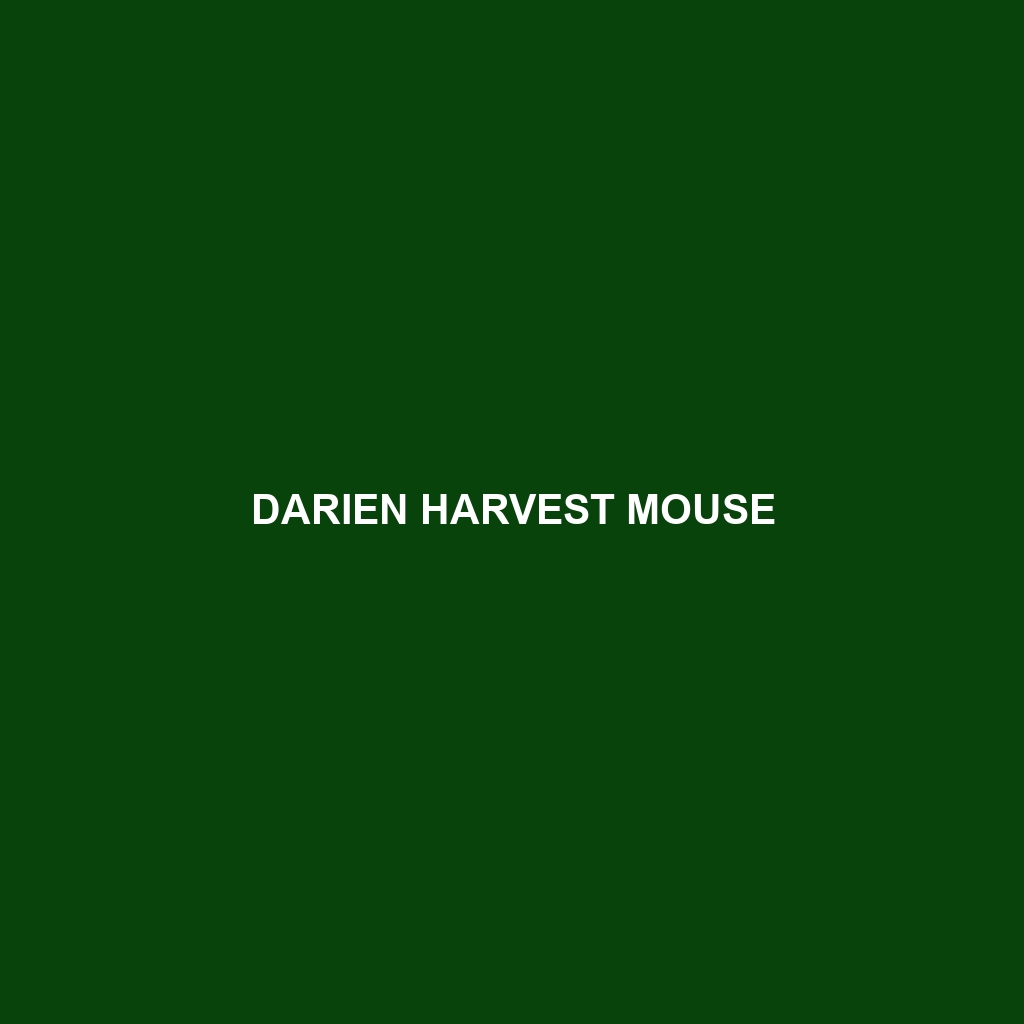Darien Harvest Mouse
Common Name: Darien Harvest Mouse
Scientific Name: Reithrodontomys darienensis
Habitat
The Darien Harvest Mouse is primarily found in the tropical rainforests of Panama and Colombia, specifically in the Darien region. This species prefers moist lowland forests and grasslands, thriving in areas with dense vegetation and abundant moisture. The mouse is often associated with understory growth near water sources, which provides security from predators and a rich habitat for foraging.
Physical Characteristics
Measuring approximately 8 to 10 cm (3 to 4 inches) in body length, the Darien Harvest Mouse is characterized by its slender body and long tail, which can be almost as long as its body. The fur is primarily a reddish-brown color with a lighter underbelly. Notable features include large eyes and ears, which enhance its senses and ability to navigate through dense foliage. Its paws are adapted for climbing and grasping, allowing it to forage effectively.
Behavior
The Darien Harvest Mouse exhibits primarily nocturnal behavior, becoming active during the night to avoid daytime predators. It is known for its excellent climbing abilities, often found foraging in trees and shrubs. This species is also social, forming small colonies, and communicates through a range of vocalizations, appealing to researchers studying animal behavior.
Diet
As an omnivorous rodent, the Darien Harvest Mouse feeds on a variety of seeds, fruits, and insects. This species plays a crucial role in seed dispersal, contributing to the forest’s biodiversity. Its feeding habits vary by season, with a diet rich in grains during peak availability in the wet season and a focus on insects in the dry season, showcasing its adaptive foraging strategies.
Reproduction
Breeding typically occurs during the rainy season, peaking between April and August. Female Darien Harvest Mice give birth to litters of three to six offspring after a gestation period of around 25 days. The young are altricial, meaning they are born hairless and helpless, depending on parental care for survival. Weaning usually occurs at three weeks, and juveniles become independent shortly after.
Conservation Status
The Darien Harvest Mouse is classified as vulnerable due to habitat loss from deforestation and agricultural expansion in its range. Conservation efforts are essential to protect this species and its natural habitat, as well as to maintain the ecological balance within its environment.
Interesting Facts
One unique aspect of the Darien Harvest Mouse is its remarkable ability to adapt to varying environmental conditions. Studies suggest that it may have a significant impact on the local ecosystem through its role as a seed disperser, thereby influencing plant community dynamics. Additionally, its vocal communication includes a series of chirps that change in frequency based on the presence of predators.
Role in Ecosystem
The Darien Harvest Mouse plays a vital role in its ecosystem as both a herbivore and prey species. It assists in seed dispersal by consuming and excreting seeds throughout its foraging activities, promoting plant growth and forest regeneration. Furthermore, this mouse serves as a food source for various predators, including birds and small mammals, highlighting its importance within the food web.
